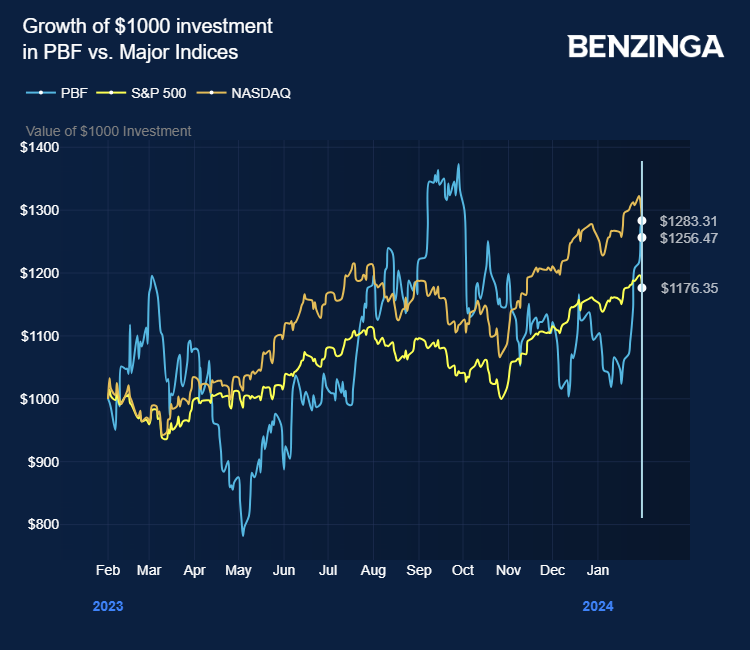Zinger Key Points
- Oil of Russian origin was banned in US after invasion of Ukraine
- Oil prices fall after Fed rules out likelihood of a March rate cut
- Feel unsure about the market’s next move? Copy trade alerts from Matt Maley—a Wall Street veteran who consistently finds profits in volatile markets. Claim your 7-day free trial now.
Oil traders were puzzled on Thursday, Jan. 31, after a shipment of 10,000 barrels of Russian oil entered the U.S., considering it’s banned.
According to data from the Energy Information Administration (EIA), posted on X by Bloomberg’s commodities editor Javier Blas, the Russian shipment entered the port of Wilmington, Delaware, on Nov. 3.
However, Executive Order 14066 — one of the sanctions that followed Russia’s attempt to invade Ukraine in February 2022 — banned the import of oil of Russian origin.
Blas thinks the Russian oil entered the U.S. through a loophole.
“The oil was shipped from Russia to the Bahamas before March 2022 — when the U.S. banned Russian imports,” he said.
While in the Bahamas it was blended with oil from other destinations — thus diluting its origin.
“So, technically, it is excluded from the ban. After 18 months in storage, it was shipped to the PBF Energy PBF refinery in Delaware City.”

Also Read: Oil’s Comeback: Middle East Turmoil Pumps Life Into 2024 Markets
Prices Hit By Fed Comments
Meanwhile, the price of oil was up on Thursday. It couldn’t fully recover the sharp sell-off the previous session after the Federal Reserve effectively ruled out a March interest rate cut.
Following the Fed’s open market committee (FOMC) meeting, at which rates were left at 5.25%-5.5%, Chairman Powell said he didn’t think a March rate cut would be likely.
The price of U.S. Nymex WTI oil fell 2.7% overnight, while Brent crude lost 1.4%. Both, however, were up by 0.8% on Thursday, with Nymex at $76.29 a barrel and Brent at $80.99.
The biggest exchange-traded fund to track the price of oil — the United States Oil Fund USO — fell 2.6% on Wednesday. It rallied nearly 1% again Thursday to $71.60.
Weekly inventory data from the EIA was also a little bearish for oil prices, showing crude stocks increased by 1.2 million barrels in the week to January 26. The market was expecting a drawdown of around 0.2 million barrels.
Global production data also looked bearish. A Reuters report showed that, despite official quota cuts, OPEC output rose for a third successive month to 27.9 million barrels a day. Several countries including Iraq, Nigeria and Gabon pumped above their agreed quotas.
Shell Results Impress Investors
Shell SHEL was, on Thursday, the first of the global majors to report fourth-quarter earnings. While revenues missed expectations, profitability was a significant beat as a strong operational performance and growth in LNG trading offset the fall in oil prices during the quarter.
Shell’s shares traded on the London Stock Exchange were up 2.5%, while American depository receipts traded on the New York Stock Exchange were up 2.3% in pre-market trade.
The rest of the majors report in the coming days. Both ExxonMobil XOM and Chevron CVX report on Friday. BP BP has its Q4 earnings call on February 6, with TotalEnergies TTE a day later on Feb. 7, followed by ConocoPhillips COP on Feb. 8.
Now Read: Battleground For Oil Majors: BP Activist Investor Calls For Cut In Green Energy Pledges
Image: Shutterstock
Edge Rankings
Price Trend
© 2025 Benzinga.com. Benzinga does not provide investment advice. All rights reserved.
Trade confidently with insights and alerts from analyst ratings, free reports and breaking news that affects the stocks you care about.